This article was co-authored by Mohiba Tareen, MD. Mohiba Tareen is a board certified Dermatologist and the founder of Tareen Dermatology located in Roseville, Maplewood and Faribault, Minnesota. Dr. Tareen completed medical school at the University of Michigan in Ann Arbor, where she was inducted into the prestigious Alpha Omega Alpha honor society. While a dermatology resident at Columbia University in New York City, she won the Conrad Stritzler award of the New York Dermatologic Society and was published in The New England Journal of Medicine. Dr. Tareen then completed a procedural fellowship which focused on dermatologic surgery, laser, and cosmetic dermatology.
There are 15 references cited in this article, which can be found at the bottom of the page.
wikiHow marks an article as reader-approved once it receives enough positive feedback. In this case, 100% of readers who voted found the article helpful, earning it our reader-approved status.
This article has been viewed 321,179 times.
We all know how bad the sun is for our skin, but how many of us have “slipped up” and forgotten to apply sun block? Maybe you've done it yourself multiple times. Excessive ultraviolet radiation (UVR) can directly damage your DNA.[1] While less-intensive exposure to the sun for short periods of time can give you a nice tan (increased skin pigmentation to protect you from ultraviolet radiation), any type of prolonged UVR exposure is detrimental to any skin type, and excessive exposure should be avoided to prevent skin cancer.[2] While sunburns can be painful, most sunburns are considered superficial first-degree burns — the mildest classification of a burn. If you've already been exposed to the sun and have an uncomfortable sunburn, you can't reverse the current damage to skin, but you can relieve the pain while allowing it to heal. Luckily, almost all sunburns can be treated at home.
Steps
Treating Your Sunburn
-
1Wash the burned area thoroughly. Use mild soap and lukewarm/cool water. [3]
- You can use a cool, damp towel applied to the affected area, but avoid any rubbing that may irritate the skin. Gently place the towel on the skin. Be sure that the temperature of the water is not too cold, as this can have negative effects on the skin immediately after a burn (cooling burned skin with excessive cold too rapidly slows down healing and increases the chances of a frostbite injury on top of the burn).[4]
- If the burn continues to cause irritation, you can relieve this by taking frequent showers or baths in cool (mildly cool) water.[5]
- Do not completely dry yourself out of the shower, but allow for a little moisture to remain to aid in healing.
-
2Consult your doctor if your burn blisters. If your burn is very severe, you may encounter blisters and leaking pus from the blisters. It is important to keep the area clean by washing it with running water and mild soap. Blistering of your skin means you have a second degree burn and infection becomes a concern. It is important to see a doctor if your burn is blistering and leaking pus. Your doctor may choose to prescribe antibiotics and can pop blisters if necessary.
- Silver sulfadiazine (1% cream, Thermazene) can be used to treat sunburns. This acts as an antibiotic to help prevent infection around areas of compromised and damaged skin. Do not use this medication on your face.[6]
- While you may be tempted to pop the blisters yourself, you run a high risk of infection. Since the skin is already damaged, it does not fight off bacterial infections effectively. It is best to let your doctor treat the blisters, as she can provide a sterile environment and tools.
Advertisement -
3
-
4Apply aloe vera gel to the affected area.[10] Aloe vera gel or soy-based moisturizers are the best choice since they will cool the burn. Preliminary studies have shown aloe vera to help burns heal faster. In a review of available scientific literature, patients treated with aloe vera healed almost nine days earlier (on average) than those who went without aloe vera.
- Generally, medical professionals recommend that aloe is best used for minor burns and skin irritations, and should never be applied to an open wound.
- For soy-based moisturizers, look for organic and natural ingredients on the label. A good example is the brand Aveeno, commonly found in most stores. Soy is a plant that has natural moisturizing capabilities, which helps your damaged skin maintain moisture and heal.
- Avoid lotions or creams that contain benzocaine or lidocaine. While once used commonly in the past, these can cause irritation and allergic reactions. Avoid using petroleum oil (also known by the brand Vaseline). Petroleum can clog pores and trap heat within the skin, preventing proper healing of your skin.[11]
-
5Keep your burn clean and moisturized. Try to avoid harsh lotions with perfumes, as this could cause more irritation.
- Continue using aloe vera, soy moisturizer, or a mild lotion with oatmeal. These products are currently recommended by many doctors and they will help to keep your skin moisturized with minimal irritation so that your body can naturally heal.
- Continue taking cool showers or baths throughout the day if you are still feeling any burning. You can take multiple showers or baths to help the skin stay moisturized.
-
6Avoid the sun while your skin in healing. Further exposure to the sun may cause additional damage, which may require medical attention. Your skin needs protection, so make sure to keep it covered when it is exposed to the sun or any other excessive UVR.
- Wear fabrics over your sunburn that won't irritate your skin (avoid wool and cashmere specifically).
- There is no “best” fabric, but a loose-fitting, comfortable, and breathable fabric (such as cotton) will keep you comfortable and may provide some additional protection from the sun.
- Wear a hat to help protect your face from damaging UV rays of the sun. The skin on your face is especially sensitive and protecting it from the sun with a hat is a good idea.
- When you are considering protective fabrics and clothing, a good test is to hold up the fabric to a bright light. The most protective clothing will have very little light penetration coming through.[12]
- Avoid being outside between 10 am and 4 pm. These are peak hours for sunburn.
-
7Have patience. Sunburns will heal on their own. Most sunburns will heal on their own within a few days to a few weeks. You can expect a longer time-frame if you have a second-degree burn with blistering that is closer to the 3 week healing time. Proper treatment with medical attention for second-degree blistering burns will result in the fastest recovery time. Sunburns can usually heal completely with little to minimal evidence of scarring (if any at all).
Managing the Pain
-
1Take an over-the-counter pain reliever as needed.[13] Follow all manufacturers' directions on dosage.
- Ibuprofen — This is an over-the-counter medication that can help to reduce inflammation, redness, and pain. Ibuprofen for sunburns is generally taken by adults in 400mg doses every 6 hours for a short period of time. Follow instructions as indicated by your doctor or the manufacturer's label. Children under 6 months old should not take Ibuprofen. Follow the instructions on the bottle. [14]
- Naproxen — Your doctor may alternatively prescribe this medication if ibuprofen hasn't worked for you. The upside is that the anti-inflammatory and pain-relieving effects will last longer once they begin. Naproxen can be found in over-the-counter medication such as Aleve.[15]
- Naproxen is a nonsteroidal anti-inflammatory (NSAID) and as such can cause some stomach discomfort.[16]
-
2Apply some witch hazel to your sunburn. Wet a washcloth or cotton gauze with this anti-inflammatory astringent and apply to the skin three or four times a day for 20 minutes to minimize pain and itching.[17]
- There are very few side effects of witch hazel and it is completely safe to use with children.
Understanding the Danger of Sun Burns
-
1See a doctor if you think you have sun poisoning. Sun poisoning is a term used to describe severe sunburns and reactions to UV rays (photodermatitis). If your skin develops blisters, if the burn is very painful, or is accompanied by a fever and extreme thirst or fatigue, seek medical attention immediately. These may be signs of a more serious medical condition. There may be a genetic sensitivity that causes this. Additionally, metabolic causes can result from a lack of niacin or vitamin B3. The typical symptoms and treatment are described in this article, but the most severe symptoms that require medical attention include:
- Blisters — you may experience itchiness and raised areas of your skin where you were excessively exposed to sunlight
- Rashes — along with blisters or bumps, it is common to see rashes that may or may not be itchy. these rashes can resemble eczema
- Swelling — there may be pain and redness in areas of excessive sunlight exposure
- Nausea, fever, headache, and chills — These symptoms may arise as a result of a combination of photosensitivity and exposure to heat
- If you experience these symptoms, it is important to seek medical attention right away for further evaluation of the severity of your sunburn.
-
2Beware of skin cancer. The two most common forms of skin cancer — basal cell carcinoma and squamous cell carcinoma — are directly related to sun exposure. These cancers form primarily on the face, ears, and hands. A person's risk for melanoma — the most serious form of skin cancer — doubles if he has had five or more sunburns. More importantly, if you have a severe sunburn, you are at greater risk for melanoma.[18]
-
3Watch out for heatstroke. Heatstroke occurs when the body fails to regulate its own temperature, and body temperature continues to rise. Since sun exposure can lead to both extreme sunburns and heat stroke, many people who experience extreme sunburns also run a risk of heatstroke. The primary signs of heatstroke are:
- Hot, red, dry skin
- Rapid, strong pulse
- Extreme body temperatures
- Nausea or vomiting[19]
Expert Q&A
Did you know you can get expert answers for this article?
Unlock expert answers by supporting wikiHow
-
QuestionWhat can I do to easily treat my sunburn?
 Mohiba Tareen, MDMohiba Tareen is a board certified Dermatologist and the founder of Tareen Dermatology located in Roseville, Maplewood and Faribault, Minnesota. Dr. Tareen completed medical school at the University of Michigan in Ann Arbor, where she was inducted into the prestigious Alpha Omega Alpha honor society. While a dermatology resident at Columbia University in New York City, she won the Conrad Stritzler award of the New York Dermatologic Society and was published in The New England Journal of Medicine. Dr. Tareen then completed a procedural fellowship which focused on dermatologic surgery, laser, and cosmetic dermatology.
Mohiba Tareen, MDMohiba Tareen is a board certified Dermatologist and the founder of Tareen Dermatology located in Roseville, Maplewood and Faribault, Minnesota. Dr. Tareen completed medical school at the University of Michigan in Ann Arbor, where she was inducted into the prestigious Alpha Omega Alpha honor society. While a dermatology resident at Columbia University in New York City, she won the Conrad Stritzler award of the New York Dermatologic Society and was published in The New England Journal of Medicine. Dr. Tareen then completed a procedural fellowship which focused on dermatologic surgery, laser, and cosmetic dermatology.
FAAD Board Certified Dermatologist
-
QuestionHow can I deal with pain from a severe sunburn?
 Chris M. Matsko, MDDr. Chris M. Matsko is a retired physician based in Pittsburgh, Pennsylvania. With over 25 years of medical research experience, Dr. Matsko was awarded the Pittsburgh Cornell University Leadership Award for Excellence. He holds a BS in Nutritional Science from Cornell University and an MD from the Temple University School of Medicine in 2007. Dr. Matsko earned a Research Writing Certification from the American Medical Writers Association (AMWA) in 2016 and a Medical Writing & Editing Certification from the University of Chicago in 2017.
Chris M. Matsko, MDDr. Chris M. Matsko is a retired physician based in Pittsburgh, Pennsylvania. With over 25 years of medical research experience, Dr. Matsko was awarded the Pittsburgh Cornell University Leadership Award for Excellence. He holds a BS in Nutritional Science from Cornell University and an MD from the Temple University School of Medicine in 2007. Dr. Matsko earned a Research Writing Certification from the American Medical Writers Association (AMWA) in 2016 and a Medical Writing & Editing Certification from the University of Chicago in 2017.
Family Medicine Physician
-
QuestionI have picture day in 2 days and my face is sunburnt! Any tips on how to hide/remove it quickly?
 Chris M. Matsko, MDDr. Chris M. Matsko is a retired physician based in Pittsburgh, Pennsylvania. With over 25 years of medical research experience, Dr. Matsko was awarded the Pittsburgh Cornell University Leadership Award for Excellence. He holds a BS in Nutritional Science from Cornell University and an MD from the Temple University School of Medicine in 2007. Dr. Matsko earned a Research Writing Certification from the American Medical Writers Association (AMWA) in 2016 and a Medical Writing & Editing Certification from the University of Chicago in 2017.
Chris M. Matsko, MDDr. Chris M. Matsko is a retired physician based in Pittsburgh, Pennsylvania. With over 25 years of medical research experience, Dr. Matsko was awarded the Pittsburgh Cornell University Leadership Award for Excellence. He holds a BS in Nutritional Science from Cornell University and an MD from the Temple University School of Medicine in 2007. Dr. Matsko earned a Research Writing Certification from the American Medical Writers Association (AMWA) in 2016 and a Medical Writing & Editing Certification from the University of Chicago in 2017.
Family Medicine Physician
References
- ↑ Matsumura Y, Ananthaswamy HN. Toxic effects of ultraviolet radiation on the skin. Toxicol Appl Pharmacol. 2004 Mar 15. 195(3):298-308. [Medline].
- ↑ Narbutt J, Lesiak A, Sysa-Jedrzejowska A, Boncela J, Wozniacka A, Norval M. Repeated exposures of humans to low doses of solar simulated radiation lead to limited photoadaptation and photoprotection against UVB-induced erythema and cytokine mRNA up-regulation. J Dermatol Sci. 2007 Mar. 45(3):210-2. [Medline].
- ↑ http://www.nlm.nih.gov/medlineplus/ency/article/003227.htm
- ↑ https://medlineplus.gov/ency/patientinstructions/000662.htm
- ↑ https://www.aad.org/dermatology-a-to-z/for-kids/about-skin/skin-cancer/treating-sunburn
- ↑ http://www.emedicinehealth.com/sunburn/page8_em.htm#sunburn_medical_treatment
- ↑ Mohiba Tareen, MD. FAAD Board Certified Dermatologist. Expert Interview. 26 March 2020.
- ↑ http://www.nhs.uk/conditions/Sunburn/Pages/Introduction.aspx
- ↑ https://www.aad.org/dermatology-a-to-z/for-kids/about-skin/skin-cancer/treating-sunburn
- ↑ Mohiba Tareen, MD. FAAD Board Certified Dermatologist. Expert Interview. 26 March 2020.
- ↑ https://www.uofmhealth.org/health-library/d00683a1
- ↑ https://www.aad.org/dermatology-a-to-z/for-kids/about-skin/skin-cancer/treating-sunburn
- ↑ Mohiba Tareen, MD. FAAD Board Certified Dermatologist. Expert Interview. 26 March 2020.
- ↑ https://myhealth.alberta.ca/Health/aftercareinformation/pages/conditions.aspx?hwid=uh3272
- ↑ http://www.mayoclinic.org/first-aid/first-aid-sunburn/basics/art-20056643
- ↑ http://www.drugs.com/naproxen.html
- ↑ http://www.parents.com/kids/safety/outdoor/sunburn-remedies/
- ↑ http://www.skincancer.org/prevention/sunburn/facts-about-sunburn-and-skin-cancer
- ↑ http://www.cdc.gov/extremeheat/warning.html
- ↑ Mohiba Tareen, MD. FAAD Board Certified Dermatologist. Expert Interview. 26 March 2020.
About This Article
To treat a severe sunburn, start by gently washing the area with mild soap and cool, but not cold, water. After it is clean, apply a cold compress or a towel dipped in cold water to the area for 10-15 minutes several times a day. You can also apply some aloe vera gel to the burn to relieve the pain and help it heal faster. Make sure to stay out of the sun while your burn is healing and take over-the-counter pain reliever if it is very painful. If your burn has blisters or is not healing well, consult your doctor. For more tips from our Medical reviewer on how to relieve the pain of a severe sunburn, keep reading.
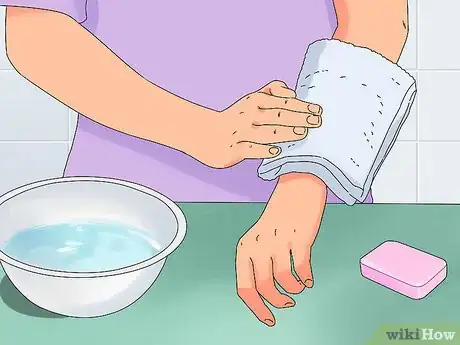
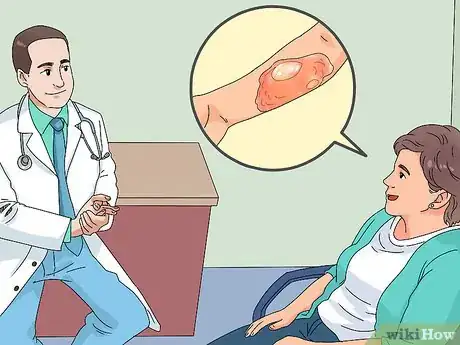
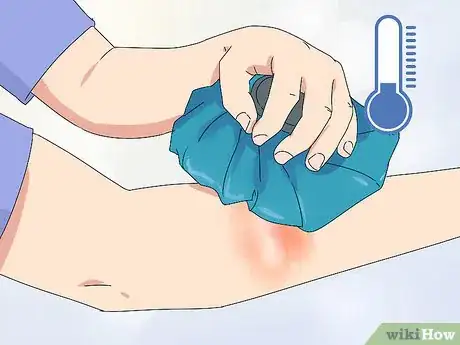

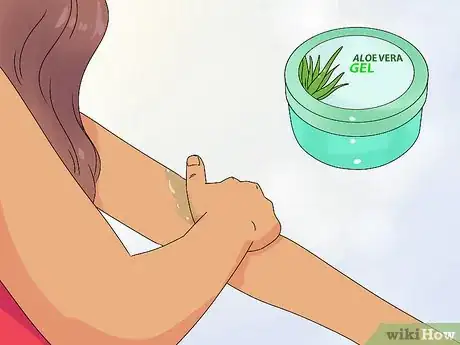
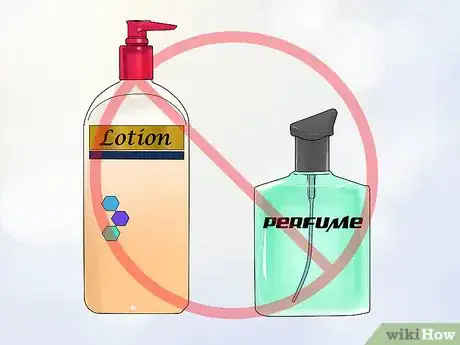
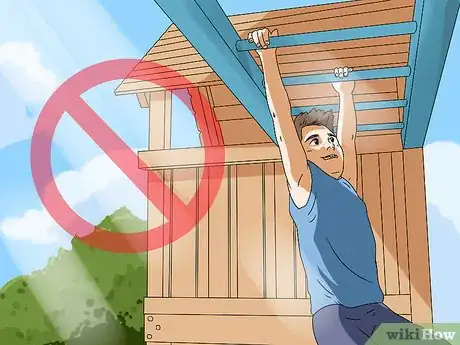
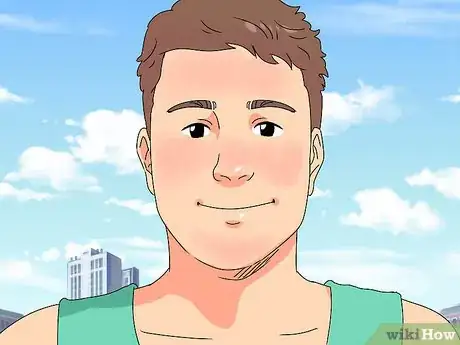
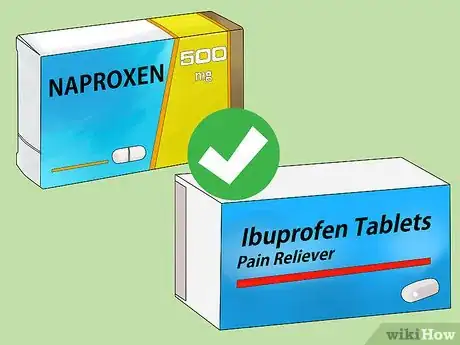
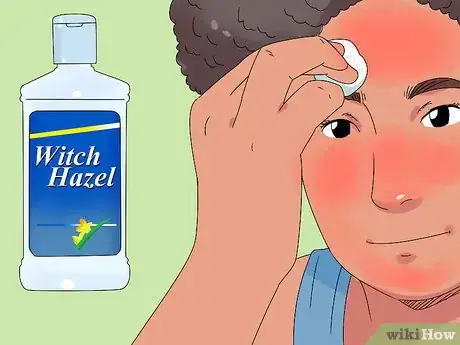

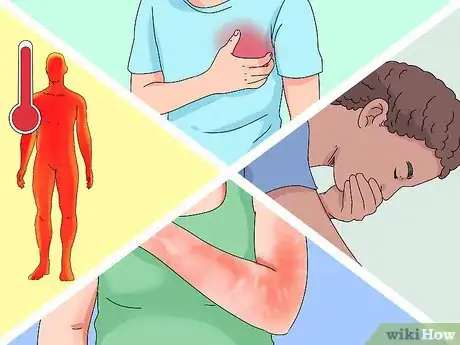
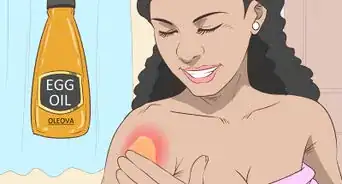
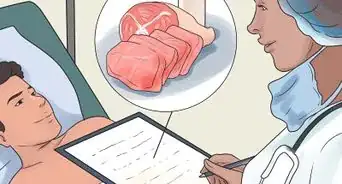
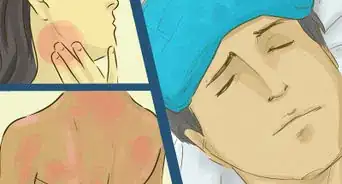
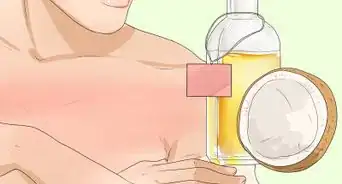
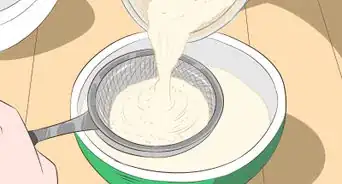
-Step-11-Version-2.webp)
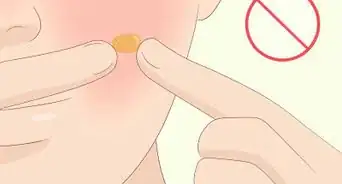
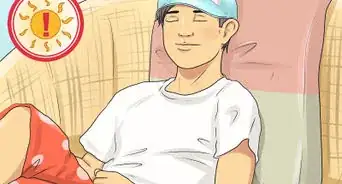

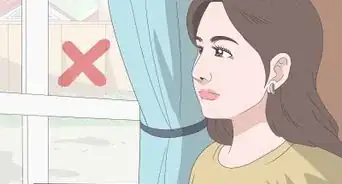
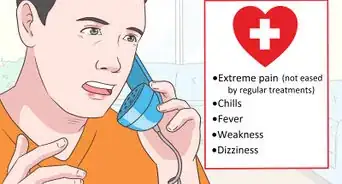

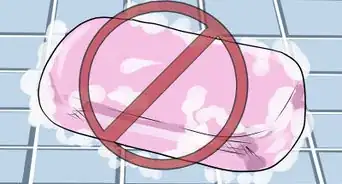
-Step-10.webp)









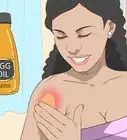
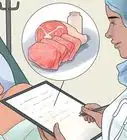
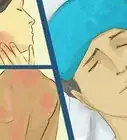
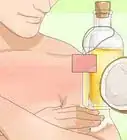




































Medical Disclaimer
The content of this article is not intended to be a substitute for professional medical advice, examination, diagnosis, or treatment. You should always contact your doctor or other qualified healthcare professional before starting, changing, or stopping any kind of health treatment.
Read More...